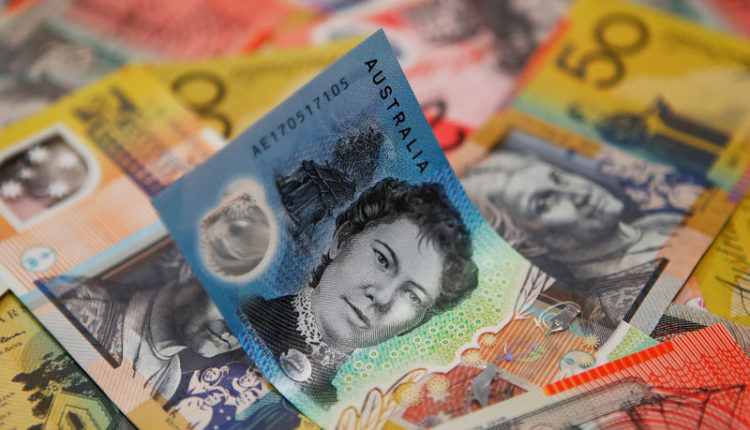Australian dollar defies broader risk rally as RBA cut looms
TOKYO (Reuters) – The Australian dollar nursed wounds on Tuesday, a day after it posted its biggest one-day fall in more than two months ahead of an expected central bank easing while improved risk appetite supported the greenback.
The dollar index against a basket of six major currencies remained near its highest in a week as sentiment picked up following an agreement between the United States and China to resume talks to resolve their trade war.
That left the euro mired at its lowest level in more than a week as disappointing economic data triggered a tumble in bond yields and boosted expectations for a central bank rate cut in the common currency bloc.
In the Asian session, investor focus has shifted to the Reserve Bank of Australia (RBA), which is tipped to lower interest rates by 25 basis points to a record low of 1.00% at a meeting later on Tuesday.
RBA Governor Philip Lowe will also speak to business leaders in Darwin after the meeting, which could provide clues on how much further interest rates could fall. A Reuters survey showed economists see a chance of another cut to 0.75% by year end.
“Lowe is speaking in Darwin, and that is really where the market will be looking for clues… but our view is we will get at least one more follow-up cut,” said Ray Attrill, head of FX strategy at National Australia Bank in Sydney.
“The other story is the revival in the U.S. dollar’s fortunes, which has surprised me a little bit, but you have the juxtaposition of Treasury yields backing up and new record lows from European yields.”
The Australian dollar was little changed at $0.6965 after slumping 0.9% on Monday, its biggest decline since April 24. The Aussie could dip below $0.6950 after the RBA’s decision around 0430 GMT but would likely stabilize as traders await Lowe’s comments expected 0930 GMT, Attrill said.
The U.S. dollar index (DXY) was up 0.5% at 96.809 on Tuesday, having posted its biggest gain since March 7 on Monday, bolstered by optimism over U.S.-China trade talks.
The focus now shifts to U.S. non-farm payrolls data due on Friday, which economists expect to have risen by 160,000 in June, compared with a 75,000 increase in May.
However, analysts expect the dollar will struggle to make substantial additional gains given expectations the Federal Reserve will cut rates due to low inflation and worries about the U.S.-China trade war.
The euro (EUR=) limped into Asian trading on Tuesday, changing hands at $1.1286. The common currency fell 0.7% on Monday, its biggest-one day decline since March.

